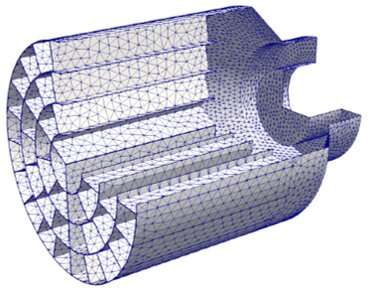Image: Letting a satellite breathe

This air intake collector is designed to harvest sufficient air particles as it skims the top of the atmosphere to fuel an "air-breathing" electric thruster. The aim is to help satellites to overcome atmospheric drag to operate on an ongoing basis in orbits from as low as 180 km to a maximum 250 km altitude.
This ramjet technology having been proven by ESA in principle, such Very Low Earth Orbit, VLEO satellites could provide sharper resolution Earth-observing imagery and low-latency communication links in the future.
The challenge is to design a sufficiently efficient air intake system to collect as many of the scarce but highly-energetic air molecules found at the top of the atmosphere as possible, to fuel an electric thruster to compensate for the air drag that would otherwise pull a satellite down to Earth in a matter of weeks. This was the goal of an ESA project with Belgium's Von Karman Institute and Politechnico di Milano, developing sophisticated software models to qualify an air intake-collector design as well as manufacturing a metal prototype.
Provided by European Space Agency





















